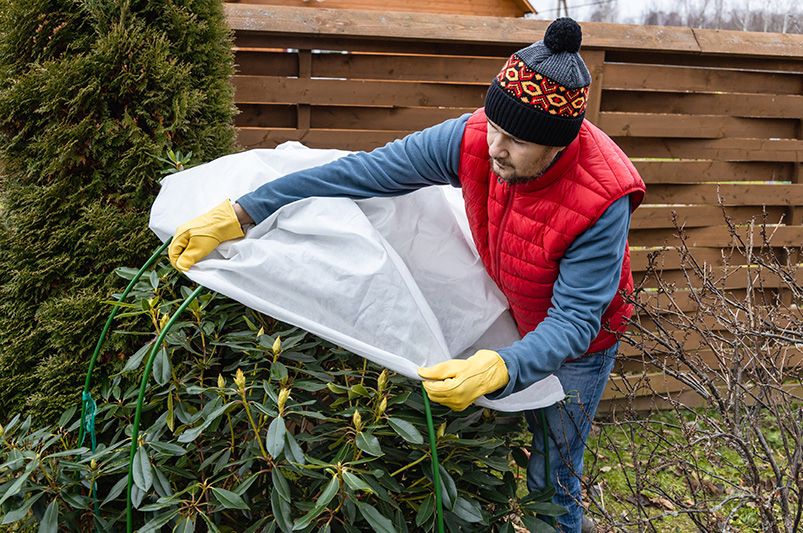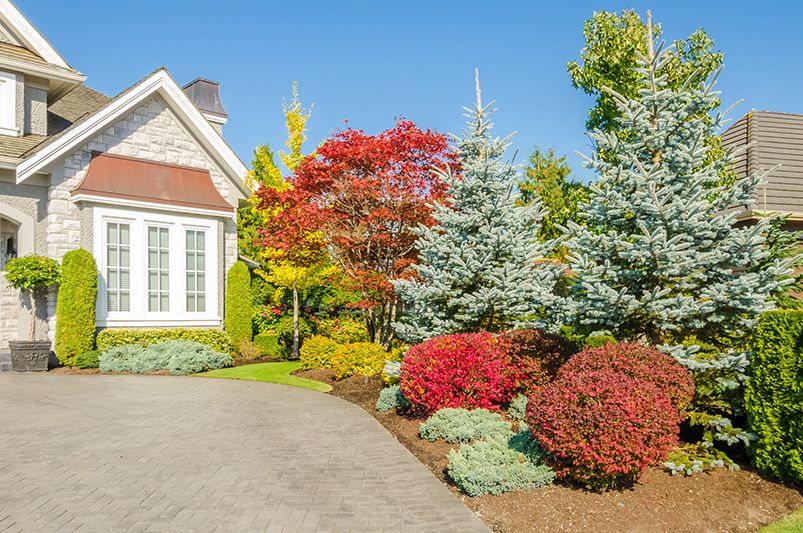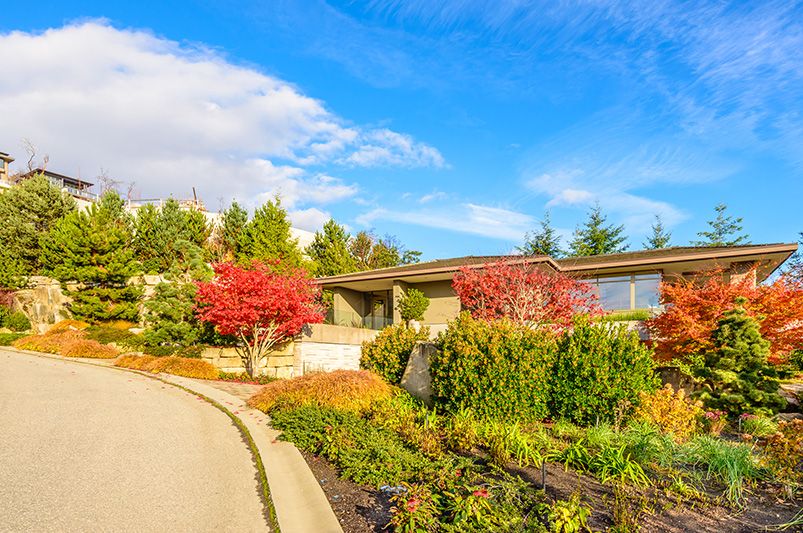
Extend Your Fall Color: How to Keep Blooms and Landscape Interest Alive Past the First Frost
Published: 14/11/2025 | Updated: 14/11/2025
As autumn settles in and mornings turn crisp, many homeowners assume their landscape is on its last breath. Summer blooms fade, foliage deepens into oranges and reds, and frost creeps closer each night. But your garden doesn’t have to shut down when the temperature drops.


With the right techniques—frost protection, smart plant selection, and strategic use of your yard’s micro-climates—you can keep your garden colorful, textured, and thriving well past that first chilly morning.
This guide walks you through simple, practical, homeowner-friendly strategies to help your landscape stretch the fall season and look beautiful long into early winter.
Why Fall Color Fades (And How to Slow It Down)
Frost is the main culprit behind drooping flowers, blackened foliage, and rapid plant decline in late fall. When temperatures drop to 32°F or below, ice crystals form inside plant tissues, damaging cells and stressing roots.
But the key thing to remember is this:
Frost rarely affects every corner of your yard equally.
And that’s where the opportunity lies.
Certain areas stay warmer, certain plants tolerate cold better, and certain techniques can delay frost exposure long enough to keep your landscape vibrant.
Let’s explore how.
Frost-Delay Techniques to Protect Your Plants
Frost protection doesn’t require expensive equipment or complicated routines. With a few simple strategies, you can literally give your plants a warm blanket on cold nights.
Covering Plants With Frost Cloths or Blankets
This is one of the fastest and most reliable methods to protect sensitive plants. Frost cloths—also called garden fabric or plant blankets—trap warm air around foliage, acting like a temporary greenhouse.

Why It Works
-
Traps heat rising from the soil
-
Prevents cold air from settling on leaves
-
Shields plants from moisture that freezes
A lightweight frost cloth can increase overnight temperatures around your plants by 2°F, which may not sound like much—but it's often the difference between survival and frost damage.
Tip: Use stakes or hoops to keep fabric off delicate blooms.
Choose Sheltered Planting Locations
Some parts of your yard naturally stay warmer because of nearby structures or landscape features. Use these to your advantage.
Examples include:
-
South-facing walls
-
Areas protected by evergreen screens
-
Spots near heated buildings (garage, home foundation)
-
Corners where wind doesn’t accumulate
These areas can stay 2–5°F warmer, often preventing early frost damage entirely.
Real-Life Example:
A hydrangea planted beside a south-facing brick wall may bloom a full week longer than one in an open yard.
Mulching: The Silent Insulator
Mulch might be the most underrated frost-defense tool.
Benefits of Mulch in Late Fall
-
Insulates shallow roots
-
Moderates soil temperature
-
Reduces freeze-thaw cycles
-
Retains soil moisture
-
Prevents shock to perennials
A 2-3 inch layer of shredded hardwood, bark, or compost can create enough insulation to keep roots warm during early frost.
To feel this effect, dig your hand into a fresh pile of mulch—notice the warmth and moisture? That’s exactly what your plants need in late fall.

Selecting Hardy Plant Varieties for Long-Lasting Color
Some plants simply perform better in cold weather. These frost-tolerant flowers, shrubs, and trees continue supplying color and interest even after several frosts.
Here are the top categories to incorporate.
Frost-Tolerant Shrubs and Trees
These shrubs and trees hold onto color late into the season and complement fall flowers beautifully:
-
Sugar Maple – fiery orange-red foliage
-
Red Oak – deep burgundy leaves that cling into late fall
-
Burning Bush – brilliant bright red, thrives in cold
-
Blueberry Shrubs – vivid red fall foliage plus edible fruit
-
Serviceberry – multi-season interest
These plants don’t just tolerate frost—they’re built for it.
Hardy Perennials and Fall Flowers
Fall’s real superstars include:
-
Hardy Mums (Chrysanthemums)
-
Sedum ‘Autumn Joy’
-
Black-eyed Susans
-
Coneflowers
-
Asters
-
Hellebores
Hardy mums are especially beloved. They tolerate light frost, rebound quickly from cold nights, and come in vibrant shades of pink, yellow, burgundy, and orange—perfect for fall displays.
Succession Planting to Extend Fall Interest
Think of your garden like a relay race.
Each plant “runs its leg” of the season:
-
Early fall: Black gum, goldenrod
-
Mid-fall: Sassafras, asters
-
Late fall: American beech, hardy mums, oakleaf hydrangea
By intentionally selecting plants that peak at different times, you ensure a constant display of color from September through November.
Succession planting eliminates dead zones and guarantees your landscape never looks tired or empty.

Leveraging Yard Micro-Climates for Extra Warmth
Every yard contains tiny climate zones—warm pockets, wind-sheltered corners, or sun-trapped areas where plants thrive even in cool weather.
Learning how to find and use these micro-climates is one of the most powerful fall gardening strategies.
How to Identify Micro-Climates in Your Yard
Spend an hour observing your outdoor space. Look for:
-
Areas that stay sunny the longest
-
Brick or stone that absorbs heat
-
Corners protected from wind
-
Dense shrubs that create warm air pockets
-
Areas near patios, fences, or deck structures
You’ll quickly notice that some spots stay warmer from late afternoon into evening — exactly when frost forms.
These pockets can extend your flowering season significantly.
Create Micro-Climates With Smart Garden Design
You don’t have to wait for nature to create these zones — you can build them.
Examples:
-
Use stone pathways to radiate heat at night
-
Plant near south-facing walls
-
Add evergreens as windbreaks
-
Build garden mounds to elevate sensitive plants
-
Layer plants vertically to trap warm air
Layering also enhances aesthetics — tall shrubs in the back, mid-height flowers in the middle, low-growing frost-tolerant plants in front.
It’s functional beauty.
Putting It All Together: Your Extended Fall Color Strategy
To keep your landscape alive long past the frost, focus on:
1. Protecting Your Plants
-
Cover them on cold nights
-
Choose sheltered planting locations
-
Add insulating mulch
2. Planting the Right Varieties
-
Select frost-tolerant perennials
-
Incorporate shrubs and trees with late-season color
-
Use succession planting
3. Leveraging Micro-Climates
-
Identify warm pockets
-
Create new ones
-
Prioritize planting in climate-favored areas
With these techniques, your landscape will remain lively with texture, warmth, and bold color deep into the colder months.
Want a Yard That Stays Beautiful Through Every Season?
ShrubHub’s expert designers can help you choose hardy plants, map micro-climates, and design a fall landscape full of color, texture, and late-season blooms.
Get your full custom landscape design today.
Bring out the best in your yard, long after the frost arrives.
Fall Color Extension Guide (Downloadable PDF)
Inside this printable guide:
-
Top frost-delay methods
-
Easy plant protection strategies
-
The best frost-tolerant plant varieties
-
A micro-climate identification checklist
-
Fall garden planning tips for homeowners
Download the Fall Color Extension Guide and keep your landscape glowing through the cold season.
FAQs
1. How can I protect my flowers from early frost?
Use frost cloths, blankets, cloches, or mulch to insulate plants and prevent cold damage.
2. What plants survive frost the best?
Hardy mums, asters, sedum, burning bush, and sugar maple are known for their cold resistance.
3. What is a micro-climate in a yard?
A micro-climate is a small area that stays warmer or more protected due to structures, sun exposure, or wind shielding.
4. How thick should mulch be in late fall?
A 2–3 inch layer is ideal for insulating roots and preventing rapid temperature swings.
5. How do I keep my garden colorful all season long?
Plant frost-tolerant species and use succession planting to stagger bloom times from early to late fall.


